Mayors of Littleton
Franklin S. Gilmore, Mayor 1890-1891
In 1888, when newcomer Franklin Gilmore announced to the local newspaper that he had purchased property in Littleton and would begin building a home, the population of Littleton was estimated at 200 people living in 30 dwellings. Gilmore also stated that 10 additional families would soon be arriving to settle in the community, a welcomed addition to the town.
Gilmore went on to establish and work at the legal firm of Gilmore & Son.
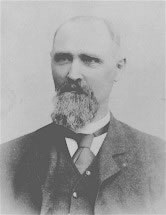
Franklin S. Gilmore
The town of Littleton was incorporated in 1889, and the first municipal elections were held on April 1, 1890. Gilmore was elected for a one-year term as the town's first mayor. Imagine a brand new town with streets, buildings and people, but no laws and no officials to enact laws; that was the situation in Littleton on that first election day. Pressing issues awaited the new mayor and six trustees, as they were called. The new town needed a safe, reliable water supply, a new police department and repairs to roads and bridges.
Committees were created to oversee finances, licenses, streets and bridges and water and irrigation. There was even a committee established to decide where to hold meetings.
Ensuring a reliable water supply was a priority, and Harry Knight was hired to dig a new well for the city. Creating a fire department was also a priority for the new town leaders. The first fire "brigade" was formed in 1890. The all-volunteer John J. Lilly Hook and Ladder Company was led by R.W. Candler. The brigade's equipment was primitive, consisting of buckets and ladders.
A special-interest group made itself heard the following year. The local chapter of the Women's Christian Temperance Union came to a Littleton Board meeting to present petitions in favor of prohibition. Four of the trustees heard about the WCTU's intentions ahead of time and were conveniently absent from the meeting. When the women nevertheless began their presentation, Mayor Gilmore suddenly felt ill. He excused himself, leaving the meeting without a quorum. The following week the ladies returned, and finding a full board, presented the petitions asking the town council to "curtail the liquor traffic to the full extent of their power." Apparently, the petitions were filed away, unread.
Gilmore stepped down as mayor in 1891.
The Gilmores raised three children, William B., Hazel B. and Emma Serena. The family moved away from Littleton around 1894.
Dr. D.S. Weaver, Mayor 1891-1892
Dr. D.S. Weaver came to Colorado for the healthy climate in 1889. With his health restored, he opened a medical practice in part of the J.D. Hill Drugstore on Main Street. The Littleton Independent reported that Dr. Weaver had purchased two lots on Harrison Street (now Sycamore) and was constructing a house.
In April 1890, Dr. Weaver was elected as a trustee on Littleton's first town council. He was also appointed Littleton's health officer, compiling information for the Colorado State Board of Health.
In 1891, Dr. Weaver ran for and was elected Littleton's second mayor. His practice grew over the years, and in 1894, he constructed a large, two-story brick business house on the corner of Main and Curtis Streets.
Hampden H. Shepperd, Mayor 1892-1893, 1895-1896, 1898-1901 and 1906-1908
Hampden H. Shepperd, born in 1840 in Fayette, Missouri, served in the Union Army during the Civil War. He married Mary Louise Dunnica in May 1865 in Glasgow, Missouri. After the war, the couple moved to Denver where Hampden became the general agent for the Chicago and Alton Railroad. The Shepperds raised three children: Thomas S., Parker D. and Orian.
In 1889, Shepperd built a new house for the family known as Lyndhurst. The house was located southeast of Littleton on "Nob Hill."
Shepperd joined the Weston Masonic Lodge in 1892. Nicknamed "Colonel" by fellow member Billy Sterne because of his exploits as a soldier, Shepperd served as Master of the Lodge for a time.
Shepperd first ran for mayor of Littleton in 1892, replacing Dr. D.S. Weaver. He ran again and was re-elected to terms as mayor in 1895-1896, 1898-1901 and 1906-1908; in these early days of Littleton's life, there were fewer "rules," no term limits and sometimes not enough candidates running for office. In the election of 1899, for example, Shepperd ran for mayor on both the Citizens' Party and the Peoples' Party tickets and was elected.
When Shepperd left office, the population of Littleton had grown to over 738 and Littleton was viewed as an agricultural center.
Shepperd passed away in Indianapolis, Indiana, on June 1, 1910. His obituary was printed in the Littleton Independent on June 3, 1910.
Henry Vannatta, Mayor 1893-1894
Henry Vannatta moved to Littleton in 1892. He was to be the fourth mayor of Littleton, serving from 1893-1894.
After his term as mayor, he was elected as a trustee on the town council. Presenting the results of town council meetings, in May of 1898 the Littleton Independent reported that Trustee Vannatta was the head of a committee investigating the land on which the town water tank stood. In his report to the council, Vannatta recommended the purchase of the two lots in question. The matter was not voted on that night. Later in the meeting, Vannatta introduced a resolution that established the rates for water consumption in Littleton.
The following month, Trustee Vannatta reported that J.B. Mayers was willing to sell to the town all the water pipe that had been laid on Rapp, Malinda, Prince and Main streets. Mayers' price was $160 and the council agreed to the purchase.
Vannatta built a single-story house at 5720 S. Bemis Street, where he lived with his wife, Nancy, and two grandsons, Roy and Verne Langdon, but little else is known about him. He passed away suddenly of heart failure on March 4, 1899. His wife and grandsons traveled with Vannatta's remains to Chicago for burial, and remained there to make a new life.
George M. Benedict, Mayor 1894-1895 and 1896-1897
George M. Benedict was born in New York in 1843. He served in the Iowa Regiment of the Union Army during the Civil War; during that time he developed health problems that would recur throughout his life. In 1871, he moved to Denver, then moved to Leadville in the 1800s.
Benedict married three times, but little is known about his wives. His third marriage was to a Canadian woman named Margaret Dobin, with whom he had one daughter.
The Benedicts moved to Littleton in 1889, purchasing a home at the corner of Prince and Malinda streets. Benedict established a blacksmith shop, which by 1890 had become quite successful. Of his blacksmith shop, the Littleton Independent wrote, "None better can be found." Benedict's handmade horseshoes were reported to be first class, and he was said to be an expert at carriage, wagon and plow repairs.
Benedict followed Henry Vanatta as mayor of Littleton for his first term from 1894-1895. His second term was from 1896-1897. Benedict also served as a trustee on the town council.
Benedict's wife, Margaret, died at home in July 1900 of unknown causes. Their daughter was 16 years old at the time. Four years later, on March 11, 1904, Benedict died of heart failure combined with pneumonia at his Littleton home.
Christopher G. Barclay, Mayor 1897-1898
Christopher G. Barclay was born in Iowa in 1862. A single man, he moved to Littleton in 1893 and bought into the hardware store owned by J.D. Hill. Hill had first opened the store in about 1875 and built it into a fine establishment.
With Barclay's investment, the name of the store was changed to C.G. Barclay and Company, and it became the largest hardware store in Littleton. With its wide range of supplies and Barclay's love of discussing the latest topics, the store became an important place for community members to gather informally to discuss issues.
Barclay, who was known for his honesty and fairness, carried everything in hardware, tinware, household goods and "a thousand and one unclassified articles" such as ranges, heating stoves and complete farmers' supplies. When 300 feet of shelf space were added for a new stock of shoes and "gent's furnishings," the event made the newspaper.
Barclay served as mayor from 1897-1898. He was a member of the Weston Masonic Lodge.
Charles W. Sittser, Mayor 1901-1902
Charles W. Sittser was born in 1856, in Weedsport, New York and moved to Colorado in 1880. With his wife, Ada Johnson, he had four children: Fred, Louise, Harry and Jay C., who passed away on July 11, 1911, when only 15 years of age.
Sittser served on the Board of Trustees for Littleton from 1893-1899. He was elected mayor in 1901, replacing H.H. Shepperd who did not run that year. Like Shepperd before him, Sittser ran as the candidate for both the Citizens' and Peoples' parties, and received the most votes of any candidate in the election.
After his term as mayor, Sittser served as Arapahoe County Clerk from 1903 to 1908. In 1907 he also served as an Arapahoe County judge.
Sittser had been in poor health for several years, and in April of 1909 underwent an operation at St. Joseph Hospital, Denver, in hopes of a cure. However, he died a few days after the operation at the age of 53. On the day of his funeral, all businesses and county offices closed during the services. He was buried in Littleton Cemetery.
Dr. J.A. Farnsworth, Mayor 1902-1905
Little is known about Dr. J.A. Farnsworth, who was mayor from 1902-1905 and also served as one of Littleton's practicing physicians from 1902-1907.
It is known, however, that Dr. Fransworth was married and lived on the Farnsworth Ranch, located one mile south of Littleton.
Progress came to Littleton in 1903 during Dr. Farnsworth's term of office: electricity finally arrived! A special concern of Littleton businessmen during that year was finding money to bring the George Leyner Company to town. Land was needed for the Leyner factory, and donated money to pay for the lots had fallen short. The majority in Littleton believed that this was an important opportunity for the town, one that might not come again. Town meetings were held at which Dr. Farnsworth was elected chairman of the Board of Trade. It was agreed that every person in town should make a donation in a fundraising effort, and the company was successfully brought to Littleton.
Robert Foy Gill, Mayor 1905-1906
Robert Foy Gill was born in Illinois in September, 1856, the son of a prominent merchant and stockman. In 1876, Gill married a woman named Mary and in 1881 they moved to Missouri. There they had two daughters, Nellie and Katie, and a son, Fred, who died in 1894.
The family moved to Littleton in 1892 and rented a house. Gill opened an all-purpose store called Gill and McArthur, which sold coal, flour, feed, farm machinery, wagons and buggies.
Gill was elected to two terms as a trustee of the town, and was considered the most conservative member of the Board of Trustees. He was elected mayor in 1905, running under the banner of the Independent Party.
Shortly after the 1906 election, Gill, along with C.D. Abbott and W. H. Shea, formed a committee to receive proposals for the site of the new Arapahoe County Courthouse. Construction on the courthouse began in July of 1907, the same year that an electric trolley car line was extended into the town.
Gill remained busy in local affairs after his term as mayor. In 1910, for example, he served as census taker for Littleton.
Dr. Walter C. Crysler, 1908-1910 and 1924-1926
Born in Chicago on February 6, 1870, Walter Crysler grew up in Illinois and went to work for the Santa Fe Railroad. The expanding railroads offered opportunities for travel and advancement that many men eagerly accepted. Crysler was no exception, and he soon found himself working as a bookkeeper in the Denver office of the Santa Fe Railroad.

Dr. Walter C. Crysler
In 1892, he married Ada Briggs in Manitou, Colorado. Her family had emigrated from England, and had lived in Minneapolis for many years. Ada's father worked as a mechanic for the Union Pacific Railroad, and while Ada was still a teen, the family moved to Denver.
After their marriage and birth of their first son, Crysler decided to become a doctor. This required attending a medical school in a city east of Denver, and he chose to return to Chicago, where he worked in the Phoenix Life Insurance Company by day in order to attend school at night. Ten years later, Crysler received his medical degree.
The family returned to Colorado in 1903 and settled in Littleton, where Dr. Crysler bought an established medical practice. His was an old-fashioned practice: he delivered babies, tended illnesses of children and adults, and made house calls. His first office was located on Main Street in the same location where Littleton's Town Hall would later be constructed. Later, in 1902, Crysler moved his practice to a larger space in the Coors Building on Main Street. It has been said that Dr. Crysler delivered 1,900 babies during his career. The first was his nephew, Walter Gray, son of Mr. And Mrs. A. E. Gray.
He ran for mayor in 1908 and served a two-year term. During this period the Arapahoe County Courthouse was completed and the population of Littleton rose to 1,373. Crysler was elected mayor again in 1924.
Both Dr. and Mrs. Crysler were active in local affairs. Crysler joined the Weston Masonic Lodge in 1906. Ada Crysler was active in the Women's Club and was a leader in the Eastern Star and other local organizations.
The Cryslers lived at 186 N. Nevada Avenue until in 1922, when they built a large, comfortable home at 605 Littleton Boulevard.
In addition to his medical practice and stints as mayor, Dr. Crysler was a savvy businessman who owned business property in Englewood and the Littleton Drugstore with his brother-in-law, A. E. Gray. The drugstore was sold in 1929 after A.E. Gray's death.
In August 1944, Ada Crysler suffered a terminal illness and was taken to Porter Sanitarium. After 52 years of marriage, Dr. Crysler could not deal with her absence and was taken to the same hospital a day later. In a poignant occurrence, he died just a few hours after Ada passed away. A double funeral was held, with internment at the Littleton Cemetery.
James E. Maloney, Mayor 1910-1912, 1913-1919
James E. Maloney, born in Brooklyn, New York, left school in the eighth grade to work full time. He did not neglect his education, however, as he enrolled in night school. After receiving his diploma, he enrolled in the Science and Art Department of Cooper Institute. Working steadily for five years, he graduated with honors, receiving his B.S. in engineering.
Maloney, who worked in railway and waterworks engineering, was one of the engineers who built the famous Chicago Drainage Canal. This canal reversed the flow of the Chicago River and was the only canal that carried Chicago's sewage into the Mississippi River. This situation caused a great controversy among the cities along the Great Lakes because the canal pumped so much water from Lake Michigan that many docks were left in shallow water.
Maloney also worked for the federal government, surveying a route for a canal through Nicaragua, a hazardous task. Eventually, the Panama route was chosen instead. Maloney also worked as the engineer on a proposed Deep Waterway that would have connected the Great Lakes to the Atlantic Ocean.
Maloney moved to Colorado in the 1890s and from 1892-1903 worked as a supervisor on the construction of the Cheesman Dam. From 1902 -1910, he worked as the superintendent of the River Division of the Denver Union Water Company. At that time he lived in a house owned by the Denver Union Water Company at 1909 West Littleton Boulevard. In February 1910, he resigned from the Denver Union Water Company to begin a position as secretary and engineer of the State Highway Commission. He remained in that service until his retirement in 1938.
Maloney was elected mayor of Littleton twice and served terms from 1910-1912 and 1913-1919. While mayor, he was instrumental in paving the highway that linked Littleton to Denver. In 1919, Maloney compiled figures and developed plans to install electric lights along this highway.
Some local residents remembered his first term for the important vote taken on April 4, 1911. On that election day, the town voted by 74 votes to continue to allow the sale of alcohol in Littleton. During Maloney's time as mayor, he also served as chief of Hose Company No. 2., an all-volunteer group of 30 members who responded to fires with a hand-drawn hose cart. Maloney called it the "most civic-minded organization in town."
In April 1898, Maloney married Margaret G. Flynn of Brooklyn, New York. The Maloney residence from 1910 until 1929 stood at 5859 S. Curtice Street. The Maloneys had eight children: John, Catharine, Elizabeth, Mary, Martin, David, Edward and James, who died as an infant.
The Maloney children had an affinity for the Navy:
John Maloney graduated from Littleton High School in 1916, then joined the Navy where he served in the submarine fleet during World War I. After the war, John attended the U.S. Naval Academy, graduating in 1922. He worked as an engineer for American Bridge Company in Gary, Indiana, before returning to Littleton in 1982.
Daughter Elizabeth became a nurse and served in World War II as a naval nurse. Later, she served as assistant director of nursing services at St. Joseph Hospital, Denver, and worked in health services at Loretto Heights for five years.
Son Martin served in the Navy Engineer Corp. during World War II.
Exerting a certain independence, however, son Edward chose not the Navy but the U.S. Air Force. Edward served as a pilot in the war, rising to major in 1951 and the rank of lieutenant colonel before retiring in 1964. He then moved back to Littleton and retired in his late 70s from the Colorado State Highway Department.
Maloney was active in the Knights of Columbus, the Knights of Pithias, the Cooper Union Alumni Association, the American Association of State Highway Officials, the American Society of Civil Engineers, the Western Society of Civil Engineers and the Colorado Society of Civil Engineers. In January of 1951, Maloney was named Littleton's "Man of the Half-Century" by the Littleton Independent.
Margaret Maloney passed away in 1947, and James Maloney in 1948.
John B. Mayers, Mayor 1912-1913
John B. Mayers was born in Germany in 1845. In 1876, at the age of 31, he emigrated to Colorado, choosing Littleton for his home. By 1884, Mayers was the owner of a saloon. In addition, he and his wife began Littleton's first "eating house" at Bowles and Rapp streets, a location that later became the Harwood Inn (also called the Sunshine and Shadows).
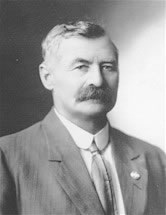
John B. Mayers
About the same time that Fred Bemis moved to Littleton and began raising Jersey cows, the Mayers also were raising Jerseys. In addition, he was also a well driller and helped drill wells for Littleton's first water system.
The first meeting to organize the Littleton Hose Company took place at the Mayers' home. The Mayers also helped to begin the first library, along with Mrs. Crocker. Mrs. Mayers served as a volunteer librarian for several years.
Mayers owned a building in Littleton that was rented to the town council for $125 per year, beginning in June of 1898.
He also owned the Littleton Ice Company along with O.C. Hoffman. This company, begun in 1889, cut ice into blocks of a useable size for residences and businesses. The company cut ice at Mayers' Lake (later renamed Sterne Lake) and stored it, covered in sawdust, in nearby wooden sheds.
Mayers served as Littleton's town marshal in 1901, winning that position with a promise to the town council that if elected, he would provide all needed bridge and street maintenance for $65 per month. After his term as town marshal expired, he declined to run for re-election.
In 1907, Mayers' first wife passed away, so she did not see his election to the position of mayor of Littleton on the Independent ticket in 1912. Mayers did not run for re-election to this position.
On November 18, 1912, Mayers married widow Lonetta Herrigan.
In 1920, O.C. Hoffman purchased the Mayers' ice business and the Mayers family moved to California.
S.A. Noyes, Mayor 1919-1921
S.A. Noyes was raised in Dodgeville, Wisconsin. Born in 1858, he moved to Colorado in his mid-thirties and settled in Silver Plume to try his hand at mining. Soon he became the operator of a mine on James Peak, the highest mine in the U.S. at the time. He also became interested in the newspaper business and eventually served as editor of the Silver Plume newspaper until 1888. In addition, he wrote for Denver newspapers.
Noyes moved to Littleton in 1914 and worked in the hardware business. His involvement in civic affairs lead to his candidacy for mayor in 1919. Noyes was elected and served from 1919-1921.
These years saw major changes in Littleton. A high school was built on Grant Street, a new Town Hall opened on Main Street, the town celebrated its first major auto dealership (also on Main Street), and the population soared to 1,636.
After a short illness, Noyes died at his Littleton home in 1932. He was survived by his wife and three children, Harry, Mary and Alice.
O. C. Hoffman, Mayor 1921-1924
When O.C. Hoffman became mayor in 1921, as was the custom at that time, he also began service as police magistrate and chief of the Littleton fire department. In addition, he was the telegraph operator at the train depot from midnight to 8 a.m. and ran the Littleton Ice Company in partnership with the original owner and former mayor John B. Mayers. In December of 1918, Hoffman purchased a half interest in the ice company; in 1920 he became its sole owner.
Hoffman was active in the Weston Masonic Lodge and served as a trustee of the new Masonic Temple building project in 1920.
As mayor, Hoffman has been categorized as someone who "always spoke his mind and accomplished what he set out to do." In addition to his four years as Littleton mayor, he served on the board of the Arapahoe County Commissioners for eight years and was chairman of the Arapahoe County Republican Committee.
On August 12, 1909, Hoffman married Mable Delia Candler, whose father, R.W. Candler, was a fellow Lodge member. The Hoffmans had a son named Orville.
Hoffman owned and bred racehorses as a hobby. In 1946, he rode his favorite horse in the Homecoming Parade along Main Street.
Charles Emmett Stephenson, Mayor 1926-1929
C.E. Stephenson followed Hoffman as mayor from 1926-29. During his term as mayor, buses replaced Littleton's street car line and Littleton was advertised as the "Center of the State's Poultry Industry."
In addition, a new concrete reservoir was built on Gallup Street to assist the water shortages that plagued all of the towns along the Front Range. This facility is now part of the Littleton Museum. The reservoir replaced an old, round steel water tank located in back of Mrs. Annie Nutting's home.
Charles G. Louthan, Mayor 1929-1932 and 1934-1940
A popular mayor of Littleton, Louthan was on the town council for 17 years and was mayor during the depression years of 1929-1932 and 1934-1940.
During Louthan's tenure, architect J.B. Benedict designed the Littleton Presbyterian Church, the Red Comet Company, manufacturer of fire extinguishers, arrived in town, and in 1939 a new post office was completed at a cost of $53,000. Louthan is best known for suggesting the present location of Highway 85 to bring traffic close to the intersection of Main and Prince Streets.
Dr. C.C. Harrod, Mayor 1933-1934
Dr. C.C. Harrod was one of the youngest mayors in Littleton, serving from 1933-1934. A chiropractic doctor, he maintained a busy office in Littleton in addition to his duties as mayor.
Harrod championed the installment of curbs and gutters throughout the town, a major expenditure for the time.
One landmark legal case during his term was Weaver vs. Town of Littleton, which involved the question of whether a part of Littleton could withdraw from the city limits. The Weaver addition of 60 acres sought to withdraw from Littleton for reasons now unknown. The case went to the Colorado State Supreme Court and was finally decided in favor of the town.
Hazen H. Taylor, Mayor 1941-1946
During World War II, elected officials across the country often remained in office until the end of the war. This was true of Littleton's mayor, Hazen H. Taylor, who served from 1941-1946.
Clearly, the war loomed large in everyone's mind, as money and materials for local projects became quite scarce. One of the biggest projects Taylor led was a civilian defense project that began a large scrap drive. Scrap-collection was handled by the local Rotary Club, with the scrap resold to dealers. It was a surprise to everyone that the town actually made a profit in this endeavor. As late as 1947, after paying off the town's indebtedness, the town council was still looking at ways to spend the windfall.
While Taylor was mayor, Littleton joined the declaration of war against Japan, and then celebrated upon receiving news in 1945 of Japan's surrender. The population of the town had now risen to 2,244.
In addition to serving as mayor, Taylor worked in the decorating business.
Roy E. Babcock, Mayor 1946-1948
Dr. Roy Babcock, a chiropractor, settled in Colorado in 1939, settling in a house on Crocker Street near Grant School in Littleton. He was active in civic life and headed the local Red Cross, served as Rotary Club president in 1947-1948, was elected president of the state association of chiropractors, and worked Sundays on the war scrap drive in 1942-43.
Babcock served as mayor from 1946-1948, at the end of World War II. With servicemen returning from the war, a housing shortage loomed. Early in 1946, plans were announced to build 250 residences at Bow Mar, and closer to downtown, developer Varian Ashbaugh revealed plans for 50 houses to be built along Windermere. A new sewage plant was constructed during Babcock's term of office.
After retiring, Babcock and his wife moved to Fruita, Colorado. Babcock passed away on October 11, 1967. He had two daughters, Dorothy and Sue.
George Malcolm, Mayor 1948-1952
George Malcolm served two terms as mayor, from 1948-1952, years when Littleton was concerned about the quality of its water, then drawn from wells. Of 589 wells tested in the area in 1949, 57 percent were found to be contaminated by nearby irrigation ditches. Littleton faced the task of finding a source of clean water, as well as the expense of cleaning up a landfill and building a new sewage treatment plant.
Despite these looming expenditures, Malcolm sought to reduce the town's mill levy (property tax rate) and focused on reducing a crime rate that had risen along with growth.
Norman Granes, Mayor 1952-1956
A Texan from a rural county, Norman Granes was born in September of 1912. He learned carpentry from his father, Herman, and together they partnered in the construction business for several years.
The father-son team moved to Littleton in the late 1930s and constructed several upscale homes in the Polo Grounds of Denver. They built the first apartment building in Littleton at 5686 S. Crocker Street. After his marriage in 1937, Granes constructed his personal home on Louthan Way near Windermere.
In their early years, Granes and his wife, Marjorie, managed the Hurst Cottage Court on Santa Fe Drive. Built by Mrs. Granes' father, it featured 20 cottages and trailer spaces. Granes improved conditions there by paving the streets and installing private bathrooms next to each trailer space. This location, at 5858 S. Santa Fe Drive, is now a McDonald's restaurant.
At the beginning of World War II, Granes was hired as a civilian contractor to help rebuild Pearl Harbor. He finished the war in the Navy as a Carpenter's Mate First Class.
Granes, who had gained an excellent reputation after the war, was elected mayor of Littleton in 1952, receiving a salary of $25 per month.
These were years of additional changes in Littleton, with the Mountain Bell building constructed at Littleton Boulevard and Louthan Street, the arrival of Martin Marietta in 1956, Woodlawn was established as a popular shopping center, and two parcels of land annexed to Littleton. By 1954, Littleton had a population of about 4,000, and no sales tax.
Granes worked to create a parkway from Sterne Park to Windermere Street, and introduced Littleton's first traffic lights. The lights were placed at Santa Fe Drive and Bowles Avenue, Main and Prince streets, and Littleton Boulevard and Windermere Street. During Granes' term as mayor, West School was completed and the old Rapp School was demolished.
Granes worked as vice-chairman of the Charter Convention that created Littleton's home rule charter and new council manager form of government in 1959. Granes also directed the Civil Defense program in Littleton. A long time member of the Weston Masonic Lodge, he became a Worshipful Master in 1950. His wife, Marjorie, became Worthy Matron.
Active in her community like her husband, Marjorie volunteered at South Suburban Parks and Recreation, the Whitman School library, and the Centennial School library. She received the Grand Cross of the Color for her service to the Order of Rainbow Girls.
In the mid-1980s, Granes developed leukemia. He died on February 13, 1986. His wife, Marjorie, later passed away on June 11, 2005.
Frank A. Randall, Mayor 1956-1957
Frank Randall served as mayor during the years when an influx of newcomers, including those employed by Martin Marietta, were stressing the town's water and sewage systems. With the growth, all the old, controversial issues of zoning and annexation resurfaced as well.
Randall, who served from 1956-1957, was part of a coalition called the Better Littleton Party, formed to improve cooperation with neighboring cities.
Albert Nathaniel Williams, Mayor 1957-1959
Born in Denver on June 14, 1888, Albert Nathaniel (Bert) Williams grew up on the ranch of his grandparents, Byron and Mollie Dorsey Sanford. The Sanford Ranch was located on West Belleview Avenue just west of the Platte River.
Williams attended Yale University and graduated from Yale's Sheffield Scientific School. In 1904, he began work as a rodman for the Denver and Salt Lake Railway. He later worked for the Rock Island Railway and the MK&T, becoming superintendent in 1918. Along the way, he married Clara Skeel in 1912.
Williams decided to try the oil business and from 1918-1921 worked in Texas, Oklahoma and Mexico. In 1921, he returned to railroading, and by 1926 he was general manager of the Minneapolis, St. Paul and Sault Sainte Marie Railway. In 1932, during the Great Depression, Williams became president of the Belt Line Railway in Chicago. One success followed another, and in 1939, he became executive vice president of the Lehigh Valley Railway.
That was followed by the presidency of Western Union in 1941. During World War II, as president of Western Union, Williams was entitled to extra gasoline ration coupons, but he never requested more than the usual allowance of four gallons per week. On one occasion, he showed a corporate executive around Central City. Williams wore rather modest clothes, and when he wanted a snack, he sat down on a curb and opened a can of peaches with a "Bowie knife." His colleague decided to tease him about the way he looked, so he found a policeman and told him to "tell that vagrant to move." Williams decided to prove his identity by going to the local Western Union office and sending a telegram. The employee in the Western Union office didn't believe who he was and became sarcastic. If he was the president of the company, she said, she "was Ethyl Barrymore." She explained that the district manager had never visited that office, so she could not believe that Williams was the president of the company.
While with Western Union, he was also elected to the boards of the Manufacturers Trust Company and the American Express Company. During Roosevelt's administration, Williams was offered a post as Secretary of Commerce but turned it down. From 1946 to 1951, he headed two firms, Westinghouse Airbrake and Union Switch and Signal.
In the early 1950s, Williams retired to the Sanford Farm in Littleton. The family had spent summers there for several years and enjoyed the lifestyle. The house was a log cabin, with a train caboose placed in the backyard as a guest house. The Williams' daughter, Molly, would often ride her horse bareback down Littleton's Main Street while Williams stopped in at the newspaper office to talk to Littleton's resident columnist, Houstoun Waring.
Williams' retirement proved short lived, as he was offered a position as the chairman of the board of U.S. National Bank. He accepted the offer though he knew nothing of banking. As the story goes, Williams asked his son, Albert, to go to the library and "get me something about banking." The savvy Williams soon mastered the banking world and solved the problems of the bank. He merged the U.S. National Bank with the Denver National Bank and the result was United Bank, a major bank in the Denver area.
Williams' successes as a businessman were noticed around Littleton, and he was elected mayor in 1957. During his two-year term, he laid the groundwork for the new city charter.
In the 1959 election he was defeated by Everett Dawson. A surprised Houstoun Waring wrote, "Here is a giant of the industrial world who is turned down by his hometown. What recognition!" Instead, Williams became financial advisor to the University of Denver.
In his long career as an executive, Williams became well known in certain social and political circles around the country, meeting celebrities like W.C. Fields, Herbert Hoover and others.
Williams always maintained his interest in people and trains. One of his last thoughts before he passed away in 1962 was a worry about whether the trains were running on time.
Everett Dawson, Mayor 1959-1960
This amazingly energetic man lived to be 103 years old. Born in 1897 in Ottumwa, Iowa, the son of a traveling salesman, he spent much of his childhood on a farm in Nebraska. There he developed a lifelong passion for horses and became an expert rider.
After graduating from Lincoln High School in 1915, he began working for the Chicago-Burlington-Quincy Railroad. He avoided the draft in World War I because railroad work was seen as vital to the country.
Dawson met and married Ida Kleinebecker in 1924. Children John and Donna were born in Nebraska, where Dawson worked in fire and casualty insurance, rising to be president of the Nebraska Insurance Association.
Not until 1942 did the Dawsons move to Denver, where Dawson went into business in a moving company franchise. A short time later he joined the Van Schaack Realty Co. as insurance manager.
In 1959, the residents of Littleton decided to change their form of government from a statutory city governed by general municipal law to a home-rule charter. Everett served as one of 21 delegates to the Charter Convention that established the new charter. He then ran for the new city council and became the first mayor under the new charter.
During Dawson's two-year term as mayor, several controversies arose. One had to do with the renaming of streets to align with Denver's streets. In addition, there were discrepancies in the city's budget, and city council decided to fire the police chief.
Dawson was instrumental in forming the South Suburban Park and Recreation District and acquiring several smaller parks. He also worked tirelessly to establish a new YMCA in Littleton, which led the Denver YMCA to name him "Man of the Year."
After his term as mayor, Dawson served as a manager of the National Western Stock Show. During his 10 years of leadership, the Stock Show was upgraded and accredited. Following his retirement from the Stock Show, his son, John, served in his place for 20 years.
The Dawsons were active in the Littleton United Methodist Church, and other civic activities. Dawson was also a member of the Lions Club, El Jebel Shrine and the Colorado Humane Society. He founded the Arapahoe Rangers Riding Club for Littleton equestrians and families; every Labor Day, club members participated in a three-day ride to the town of Buffalo, Colorado, and back.
Dawson lived with Donna and Max Smith, his daughter and her husband in his later years, and spent his last months at the Littleton Life Care Center. He was 103 at the time of his death on October 6, 2000.
Gordon F. Taylor, Mayor 1960-1963
Gordon F. Taylor was born in 1926 in New York where he attended Horace Mann Preparatory School. Taylor served in World War II in the U.S. Navy. After the Navy, Taylor was offered a scholarship to MIT, where he graduated with his degree in electrical engineering.
Taylor served as mayor from 1960-1963, which was a time when Littleton struggled to retain its sense of identity against the mounting pressures of suburban growth.
The city had experienced a 305 percent gain in population during the past decade, reaching 13,670 inhabitants by 1960. Subdivisions grew up at alarming speeds and school crowding was the norm, with enrollments jumping 30 to 40 percent each year. Auto traffic and congestion increased steadily as well.
When Taylor took office in 1960, the city's volunteer fire fighters had been replaced by a professional fire department, and the push for a junior college in Littleton was in full force. During his administration the City acquired the Ketring property which is now the location of the Littleton Historical Museum.
Taylor served as a city councilman for six years prior to becoming mayor. He was chosen as Littleton's Most Valuable Citizen in 1963. His many activities included serving on the library board, the Street Improvement Committee, the Citizens Water Committee, the board of directors for Project 66 to develop downtown Littleton and the board of directors for the GLAD Corporation to secure new industries in Littleton. Taylor also represented Littleton on the Urban Mayors' Council and in the Colorado Municipal League. In addition to his community involvement, Taylor worked in a full-time executive position at Rogers Publishing which later became Cahners Publishing Company.
After Taylor retired he and his wife, Maggie, moved to Los Osos, California, where he served for five years on the Los Osos Community Services District Waste Water Committee beginning in 2000. He passed away on Tuesday, June 14, 2011 in San Louis Obispo, California.
Thomas R. Heaton, Mayor 1963-1965 and 1969
Thomas R. Heaton was born in Ames, Iowa, but grew up in Washington, D.C. A heroic soldier, Heaton joined the U.S. Army at the age of 16 and served in World War II at the Battle of the Bulge, the Battle of the Rhineland and the Battle of Central Europe. He was wounded several times and received the Purple Heart and Oakleaf Cluster, the Bronze Star and Cluster, and the Silver Star.
Heaton obtained his M.S. in aeronautical engineering from Purdue University in 1950. After working on jet engines for General Motors, he joined Martin Marietta and moved to Littleton in 1958. He worked on the Titan missile and Skylab I projects. As part of the Skylab project, Heaton invented a sun shield to protect Skylab I from solar radiation. He worked as director of large proposals for Martin for several years.
In 1961, Heaton was elected to the city council. He served as mayor pro-tem from 1965-69, a time of tremendous growth for Littleton, and as mayor again in 1969.
Heaton was in office when the South Platte River flooded in June of 1965, costing millions of dollars in damages, including damages to Littleton's wells and water system. Heaton and five other local mayors, including Mayor Currigan of Denver, flew to Washington to request an appropriation to construct a new dam that would prevent future flooding. Their efforts resulted in the construction of Chatfield Dam.
While Heaton was mayor, a number of projects for the improvement of Littleton were completed. These included construction of the new Bemis Public Library, the remodeling of the Carnegie Library for use by the police department, and the restoration of the front of the Town Hall. He created the Downtown Improvement District that installed the "pods" and trees along Main Street and the one-way streets of Main and Alamo.
While serving as mayor pro-tem from 1965-69, Mayor John Kinghorn resigned and Heaton took up the mantle of leadership again. He pushed for the development of Arapahoe Community College and the development of parks and open space. The bus line that linked Englewood, Littleton and Fort Logan was established and Heaton initiated the study of a new municipal complex and a proposal for a new museum.
As the city grew quickly, city government had to keep up with the changing conditions. Improvement districts were formed to bring streets up to new codes and allow for future improvements.
While working in local politics, Heaton maintained his high-level job with Martin Marietta. For his good works, he was voted "Littleton's Most Valuable Citizen" in 1966.
Heaton and his wife, Betty, had two children, Nancy and Robert. Betty Heaton served on the City's Fine Arts Board for a number of years and was instrumental in acquiring art for the City's permanent collection.
Heaton retired from Martin Marietta in 1988 and later headed a committee to create a World War II Memorial in Littleton; the memorial was dedicated in 2000. He passed away on August 16, 2001.
John Kinghorn, Mayor 1965-1969
"Extra, extra, Mayor of Littleton resigns." Mayor John Kinghorn resigned his office in August of 1969, stating that he was frustrated by the events of the previous six years. In particular, he was frustrated by conflicts with the local newspaper about his attempt to bring the Gates Rubber Company to Littleton.
Kinghorn, who was born in 1927 and came to Littleton from New York, worked as comptroller of the Centennial Race Track west of South Santa Fe Drive and also as an accountant with the firm of Wilson and Kinghorn.
He was elected to the city council in 1963, and in 1965 was elected council president, the equivalent of mayor. He worked tirelessly on several fronts: to improve the water system of Littleton, to establish Arapahoe Community College and to persuade the Gates Rubber Company to relocate here. In addition, he and the city council developed the first comprehensive plan for Littleton and hired their first city planner. There were two park districts serving Littleton at that time: South Suburban and Arapahoe Metro. Kinghorn was instrumental in the acquisition of Arapahoe Metropolitan Park District, the merging of the two park districts and the acquisition of 80 acres of new parkland. Kinghorn also led the City Council to take the unpopular step of linking Littleton's water system to Denver. He negotiated a contract with the Denver Water Board which gave Littleton advantages enjoyed by no other user of Denver water. An assured water supply was one factor which led Gates Rubber Company to locate its new plant in Littleton.
With two years left in his term, Kinghorn chose to resign in time for the next elections in November 1969. Thomas Heaton, who had already served as mayor, was designated by the city council to take over for Kinghorn in the interim.
As if to emphasize the problems within city government, five current councilmen, including Heaton, stated they would not run for office again. Only Reginald (Reg) Bessette and Vaughn Gardinier remained for two more years. Dr. Marturano ran for re-election.
Kinghorn was designated general manager for the Centennial Rack Track in November of 1969. He died in 1984 and is buried at Chapel Hill Memorial Gardens in Centennial, Colorado.
A. Reginald Bessette, Mayor 1969-1971
A. Reginald (Reg) Bessette was born in Moose, Wyoming, in 1915. Most of his early years were spent with his family in New York.
He came to Denver in 1952, working with a life insurance company. After two years he joined a real estate firm with businessman Forest Luft, who subsequently was killed in an accident. Bessette purchased the company in 1956, changing the named to Western Empire Realty. He and his wife, Sally, and their children moved to 5820 South Hickory Street in 1955.
In 1959 Bessette was appointed to the Littleton Planning Commission, and in 1960 he was elected by his peers to chair the Commission. He also served on the Inter-County Regional Planning Commission and was chairman of the Citizens Finance Committee to study the City's budget.
Bessette was elected to the Littleton City Council in November of 1963 for a two-year, at-large district term and was re-elected in 1965. In 1967, he ran for a four-year at-large term; he was re-elected for a second four-year term in November of 1975. While serving on the city council, Mayor John Kinghorn resigned and Bessette served briefly as interim mayor. In November 1969, Bessette was elected mayor, serving until 1971.
Rapid growth and its attendant problems challenged the mayor and city council. The city grew in all directions. New schools were built and new subdivisions such as Broadmoor and Aberdeen Village were constructed to handle the doubled population. New traffic lights were built to handle the increased traffic.
Reg Bessette's wife Sally also had an affinity for helping in the community. She served as the first female president of the South Suburban Board of Realtors. She worked with the Littleton Human Relations council and community activists to pave the way for minority families to live in the Littleton community. Sally Bessette also coordinated publicity for the League of Women Voters and was a two-term president for the Arapahoe Mental Health Association.
Reg Bessette passed away in 1989.
F. Vaughn Gardinier, Mayor 1971-1975
F. Vaughn Gardinier came to Littleton with his family from Kansas in 1938. Here he attended Littleton High School and worked part time selling the Littleton Independent and Liberty magazine. After graduating from high school in 1944, Gardinier attended the University of Denver on a football scholarship. Unfortunately, an injury cut short his college experience. He enlisted in the Navy for two years, then returned to Littleton. Using the G.I. Bill, he returned to the University of Denver and graduated with a major in economics and a minor in finance.
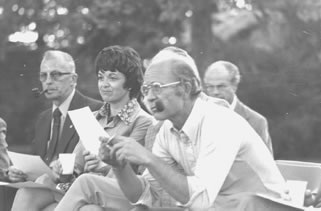
F. Vaughn Gardinier, in front, center of photo; Sally Parsons seated next to him.
After college, Gardinier went to work for the brokerage firm of Dunn and Bradstreet. He married Alice in 1950. Five children soon followed: Elisabeth, Dan, Julie, Margaret and Tom.
In 1959, Gardinier opened his own firm in Littleton, Gardinier & Company and in 1967, he was elected to the city council. Four years later the council elected him mayor, a position in which he served from 1971-1975.
His special interests included low income housing and rehabilitation, city beautification, and the museum-library complex. Gardinier stated in the local newspaper, "I introduced the refunding of bonds which saved the city a substantial amount of money. I've enjoyed negotiating for purchase of property for the community."
Gardinier was active in many community-building activities in addition to his service on the city council. For many years he volunteered his time as a fundraiser for the Littleton United Methodist Church, the Littleton YMCA and the Lions Club. Gardinier also served for many years on the Interfaith Task Force Board of Directors.
After his terms as mayor, he returned to a council seat, where he worked for the conversion of the old city hall into a cultural arts center. Gardinier was named Littleton's "Most Valuable Citizen" by the Littleton Independent in 1977.
Gardinier passed away on February 3, 2012.
Harold Meyer, Mayor 1975-1977
Born in Paulina, Iowa, Harold Meyer has lived in Littleton since 1959. After serving two years in the Army at the end of World War II, Meyer married Natalie Clayton from the neighboring town of Sutherland, Iowa.
The young couple moved to Denver where they both worked, Meyer as office manager and treasurer of Hartmeister Manufacturing Company and his wife as a teacher at Bear Creek High School. In 1957, Meyer started work for the Norgren-Stemac Company. This prompted the move to Littleton.
Both of the Meyers became politically active in the community, campaigning for various candidates. In 1968, Mayor John Kinghorn called Meyer and invited him to fill a vacancy on the Littleton City Council that was created by the departure of Victor Ross. Meyer agreed and became a city councilman. He ran for re-election in 1969 and 1973, and served as mayor from 1975-1977. During his term as mayor several beautification projects were initiated, including the beautification of Federal Boulevard in Littleton. Also, the Littleton Center project was initiated; the Center provided new offices for City employees.
Meyer was an active public service member volunteering at the Denver Museum of Nature and Science, serving as a member of the Denver General Hospital Board, and the Denver Regional Council of Governments.
Natalie Meyer shared her husband's interest in public service, and served Colorado as the Secretary of State. The Meyers had three daughters: Mary, Becky and Amy.
Harold Meyer passed away on December 14, 2006.
Sally M. Parsons, Mayor 1977-1979
The first woman mayor of Littleton, Sally Parsons served on the Littleton City Council for 10 years (1973-83). She was elected mayor in 1977. Parsons was active in the Colorado Municipal League, a past president of the Arapahoe County League of Women Voters, a lobbyist for Special Districts (Park and Recreation), an appointee to a national noise task force, and served on the technical advisory committee for the state rail plan.
Nominated by Councilman Vaughn Gardinier, Parsons was selected as mayor by a vote of the City Council. The Council, under Parsons leadership, faced challenges such as the completion of South Platte Park, the move into the new Littleton Center (City Hall), a resolution of the Bowles Avenue traffic congestion, depression of the railroad tracks, implementation of the citywide traffic study, and development of the South Industrial Neighborhood. Among Parsons' many accomplishments was the development of the City's Youth Employment Office, which helped young people find jobs with private companies, and a new ordinance to provide more assistance to juveniles who were in trouble with the law. An outgrowth of this ordinance was the assignment of officers to visit elementary schools in the Littleton city limits.
In 1978 Parsons invited then-President Jimmy Carter to tour the Littleton Center and the Littleton Housing Authority's solar heating projects during his May 3 "Sun Day" visit to Denver.
Parsons enjoyed distributing her annual, unofficial Crabby-Appleton awards, a five year tradition recognizing excellence and non-excellence in City staff, council and any other agency which had a memorable encounter with the city.
Parsons and husband Bob moved to Littleton shortly after their marriage. Bob Parsons worked for Marathon Oil Company. Together they raised two sons: Brian and Alan. In 1989, the couple purchased The Spinning Wheel, a dry cleaning business, and operated it for many years.
James P. Collins, Mayor 1979-1983
James Collins majored in business and psychology at Western Michigan University in Kalamazoo. While working as assistant personnel director in a large company, he studied for his Masters degree. He moved to Denver and in 1973 formed the company of Lyon, Collins & Co., management and local government consultants. Attorney Collins assisted cities, counties and special districts, with emphasis on water and sanitation issues. The first office was at 17th and Williams Street in Denver.
Collins was elected mayor in 1979 and served a four-year term. Under his leadership the City Council approved backing $4.32 million in industrial development bonds for companies planning construction in the city. In addition, several large capital improvement projects were undertaken, including the Mineral Avenue railroad separation project, the railroad depression project, a new library addition, the Little's Creek drainage project and the South Platte Park acquisition.
Charles Emley, Mayor 1983-1989
Charles Emley served a six-year term as mayor from 1983-1989, and four terms on the Littleton City Council. A long-time resident of Littleton, he and his wife, Ellen, moved here in 1958 when Emley became finance manager for Martin Marietta Corporation (now called Lockheed Martin).
Emley was born in March, 1927, in Emporia, Kansas, and attended the University of Wichita, graduating in 1945. He completed graduate studies at the University of Michigan, and enlisted in the Army. Although his enlistment came too late for him to see active duty in the war, he served in Japan during the occupation of that country.
During his political career Emley played a leadership role in three highway projects: the widening of West Bowles Avenue, the link between Mineral Avenue and Santa Fe Drive and Platte Canyon Road, and construction of C-470.
Emley was on the city council when the heavy rail lines were depressed through downtown Littleton, a move that minimized the disruption of traffic. He worked tirelessly for the construction of the Southwest Light Rail Corridor, a long-term project that opened in July 2000. Emley was part of the ceremonies when light rail opened, and rode the first train. In the 1980s, Emley was chosen by Denver Mayor Federico Pena to serve on the first Metro Area Transportation Group.
Emley was an original member of the Regional Air Quality Council. This organization studied air quality issues in the Denver area and provided plans to mitigate pollution problems and bring the Denver region into compliance with Federal air quality standards.
Emley stayed active until the end of his life, serving on the Board of Porter Adventist Hospital, the Littleton Housing Authority, the Littleton Historical Museum, Littleton Unlimited and the Boy Scouts. He and his wife were members first of the Littleton Presbyterian Church and later of Columbine United Church.
Charles Emley passed away on November 24, 2000, following a short illness.
Susan M. Thornton, Mayor 1989-1993 and 1999-2003
Susan M. Thornton has worked as a reporter for U.S. News and World Report and as a writer for Time, Fortune and Money magazines. She earned an undergraduate degree from Michigan State University, spending a year interning with Nebraska's unicameral legislature as she completed her degree. She went on to earn a master's degree in journalism from UCLA in 1966. Prior to her service on the city council, Thornton had established Media Images, a public relations consulting company. Thornton and her husband, John, married in 1967 and moved to Littleton in 1970, finding here the "sense of community" they sought. Their son, Charles, was born in 1973.
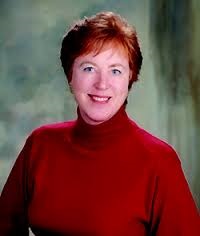
Susan Thornton
Thornton's first formal involvement with the City of Littleton came in 1977, when she was asked by the City Council to chair the Littleton Task Force on Natural Resource and Energy Conservation, which studied environmental and growth-related issues for the Council. The Task Force also established a recycling program that served both Littleton and Englewood for a number of years.
In 1981, Thornton became involved with helping to turn Littleton's old Town Hall on Main Street into the Town Hall Arts Center. From 1980-83 she served on the steering committee of the Littleton Leadership Retreat, then chaired the Retreat for several years; she continued to be involved in planning the Retreat in the 1990s and again in 2001 and 2002.
In the 1980s, she wrote for "Fiasco," a musical spoof of the community, and served on the Press Council for the Littleton Independent newspaper. She was membership chair of the Friends of the Littleton Library/Museum from 1983-1985, and was president of that organization from 1985-1987.
In 1987, former mayors approached her to run for city council. Her energy and friendliness helped her succeed to a four-year, at-large council seat; she was re-elected to that position four times, serving on the City Council a total of 16 years. She became mayor in 1989 and served as mayor from 1989-1993 and again from 1999-2002. She was also mayor pro tem for two terms (1993-1995 and 1997-1999).
In the early 1990s, Littleton was notified by the Environmental Protection Agency that it was a potentially liable for millions of dollars in cleanup costs because it had placed sludge from the Littleton-Englewood Wastewater Treatment Plant at the Lowry Landfill. The City joined with other municipalities to fight this unfair action, and Thornton began a campaign to educate Littleton residents - and Littleton's Congressional delegation - about possible financial implications. She became a key spokesperson for American Communities for Cleanup Equity and was named the sole municipal representative on the National Commission on Superfund (1992-1994). In these positions, she attended numerous meetings across the U.S. and testified on several occasions before Congressional committees.
Thornton was elected to the executive board of the Colorado Municipal League five times between 1991-2003 and was president of the League from 1993-1994. She spoke often at League workshops and conferences, chaired the League's Superfund Committee and also served on the League's Policy, Children and Youth and Juvenile Justice committees over the years.
In 1991, she was appointed to the Energy, Environment and National Resources Policy Committee of the National League of Cities. She was subsequently appointed to a steering committee position and served there for seven years (1996-2003).
In 1996, Thornton was asked by Governor Roy Romer to chair his Renewable Energy Task Force. In addition, she was a member of the Regional Air Quality Council from 1996-1999, served on the steering committee of Littleton Unlimited (a strategic planning process) from1993-1996, was a member of the South Metro Chamber's Economic Development Council from 1992-1993 and co-chaired a Gold Ribbon Committee for Littleton Public Schools.
A founding member of the Metro Mayors' Caucus, Thornton was co-chair of the Caucus from 2002-2003, represented municipal interests on the State/Local Forum and was vice-chair of the Colorado Energy Science Foundation beginning in 2000.
Following the tragedy at Columbine High School in 1999, Thornton became a founding board member of the Greater Littleton Youth Initiative, which was dedicated to youth-development and the prevention of youth violence. She helped guide the Initiative to a number of prevention programs that were implemented in Littleton.
During the 16 years Thornton served on the Littleton City Council, major progress was made in the city. A vigorous citizen-outreach program was developed, including the Littleton Report, Littleton 8! (cable channel), neighborhood outreach meetings, and an interactive Web site; library check-out services were computerized; a life-saving E-911 system was installed; the popular southwest light rail line was built and the old Denver and Rio Grande railroad depot was renovated for use at the downtown station; downtown Littleton was named to the National Register of Historic Places and a historic preservation ordinance and district were put in place; the city developed a strategic approach to youth-development and violence-prevention; an innovative, award-winning program was in place to strengthen local businesses; and the Police Department began community policing with the addition of Neighborhood Liaison Officers and School Resource Officers.
In addition, major infrastructure investments were made, including millions spent on the rebuild of area roads and storm drainage projects; the extension of Mineral Avenue and the widening of Bowles were completed; several strategic parcels of open space were purchased to protect the South Platte Park; Chambers Farm (now Wynetka Ponds) was preserved; mini-parks were developed across the City; the last at-grade rail crossing was eliminated through Littleton; a major beautification project was undertaken on Main Street; a three-year expansion of Bemis Library was completed; the city preserved and renovated the historic Arapahoe County Courthouse for use as the city's courts; land was acquired next to the Courthouse for a new community recreation facility; a new city maintenance facility was acquired; important safety improvements on South Santa Fe were under way; a major expansion of the Littleton Historical Museum and construction of a new Fire Station 12 were also under way; and a new police administration facility was in the planning stages.
Thornton received a number of honors for her civic and professional contributions. In 1993 the Littleton Independent named her Littleton's "Most Valuable Citizen," she received a "Distinguished Service Award" from the Denver Regional Council of Governments in 1994 and she was the recipient of the UCHSC School of Nursing's "Visionary Leadership Award" in May of 2000.
Thornton's husband, John, is an electrical engineer known internationally for his work in solar energy. In their spare time, Thornton and her husband enjoy travel. In 2001, for example, they led a delegation of elected officials from Colorado to meet with mayors in Bulgaria. They acknowledge their Scottish roots by playing in the Colorado Isle of Mull/St. Andrew Pipes and Drums bagpipe band. Thornton has chaired the Western U.S. Pipe Band Association, founded the North American Alliance of Pipe Band Associations, and competes and judges across the Western United States.
Dennis S. Reynolds, Mayor 1993-1997
Elected mayor from 1993 to 1997, after serving on the City Council since 1989, businessman Dennis Reynolds has been a Coloradan since his college days at the University of Denver where he majored in accounting and later became a certified public accountant.
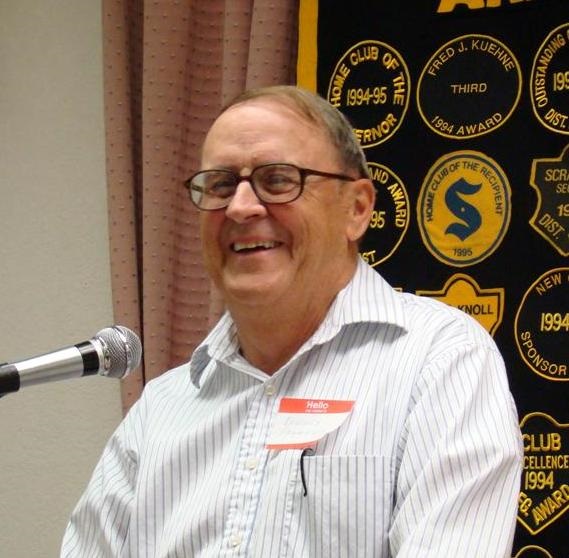
Dennis S. Reynolds
Dennis was elected the third chairman of the Centennial Chamber of Commerce (now the South Metro Denver Chamber of Commerce) when dealing with the construction of C-470. He founded the Chamber's Leadership Centennial Program and developed the Chamber's first economic development program. Later he became president of Combellick, Reynolds and Russell, certified public accountants.
In 1988, the Littleton Town Hall Arts Center became virtually bankrupt, but Reynolds stepped in, assumed the presidency and managed to keep the center open. He negotiated with the City Council for them to pay the utilities, insurance, loan installments, and janitorial services. The cost of these concessions to the residents of Littleton was $133,000/year, but the Town Hall Arts Center was able to continue and become a valuable asset to Main Street and its economy.
While on the City Council, his special interest was promoting the construction of light rail down Santa Fe Drive. Reynolds traveled many times to Washington, D.C., to convince Congress, the Administration and the Transit Authority to fund the Littleton light rail project. In 1996 he obtained $120 million of the $180 million needed for the project from the Federal Government. The balance of $60 million needed to be funded locally. The construction broke ground in 1997 during his last year as mayor.
Reynolds also served as president of Arapahoe Community College. He has been a member of the Englewood Sertoma and Englewood Jaycees. As a volunteer, he served as president of Holy Trinity Lutheran Church Council and worked on the finance committee of the Lutheran School of Theology.
With his accounting background, Reynolds was instrumental in acquiring funds toward the construction of The Buck Recreation Center and the Lone Tree Recreation Center. In honor of his many years of dedication to the community the City of Littleton and South Suburban Parks and Recreation District named a park adjoining the Platte River, Reynolds Landing. The park is located at 6745 S. Santa Fe Drive and is accessible through Brewery Lane.
Dennis Reynolds' other awards and volunteer positions:
- Trustee of the Swedish Medical Center Foundation
- President of the Arapahoe Community College Foundation
- Board of Directors of the Hudson Gardens and Events Center
- Vice Chairman of the Arapahoe County Scientific and Cultural Arts Committee
- Member of the Arapahoe County Ethics Board
- Member of the Executive Board of the National Association of Regional Councils of Gov’t.
- 1993-1997 member of the Executive Council of the Metro Mayors Association
- 1991 Colorado Society of Certified Public Accountants Public Servant of the Year award
- 1986 named “man of the year” by the Littleton Times
- DRCOG regional leadership and service awards
- President and treasurer of Holy Trinity Lutheran Church in Littleton
- Chairman of the Finance Committee of the Lutheran School of Theology in Chicago
- Treasure of the Rocky Mountain Synod of The Evangelical Lutheran Church in America
- President of the Englewood Sertoma and board member of the Englewood Jaycees
- Board member of the Littleton Rotary Club
Patricia Torres Cronenberger, Mayor 1997-1999
Patricia (Pat) Torres Cronenberger was elected to her first term on the Littleton City Council in 1987 and served almost four terms; she came from a background of historic preservation and community service. Pat majored in art history at Dickinson College, Carlisle, Pennsylvania then wrote for Historic Denver News in 1976. She followed that with a position as staff assistant with the office of U.S. Representative Tim Wirth. In 1978, she moved to the Department of the Interior as an historian and budget analyst. There she met Rick Cronenberger, historical architect for the National Park Service. They married in 1982; the couple has one son, Andrew. Continuing her studies in historic preservation, Pat obtained her Masters of Arts from George Washington University in 1981.
In 1983 she became marketing director for the project managers for Denver’s Tabor Center. She followed that with a position with Hoover Berg Desmond Architects.
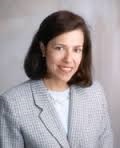
Patricia Cronenberger
She has served on the Riverfront Authority Board, four years with the Littleton Historical Museum Board, and chaired the South Platte Park Open Space Task Force. She has worked as a stage manager for the Friends of the Littleton Library and Museum’s "Fiasco", and served two years on publicity for Western Welcome Week. She was selected to participate in Littleton's Centennial Chamber Leadership Program (now the South Metro Denver Chamber of Commerce).
In 1997, Cronenberger was elected Mayor of Littleton and served until 1999. Major initiatives during her term included the acquisition of Chambers Farm, (later named Wynetka Ponds) and of the Arapahoe County Courthouse to become the Littleton Municipal Courthouse. Council also authorized a number of enhancements to the Littleton light rail stations, which were being designed as part of the Southwest Corridor light rail line. One enhancement involved the moving and renovation of the Denver and Rio Grande Depot to the downtown Littleton Light Rail station for which she actively advocated. Also during this period, the city undertook the reconstruction of Littleton Boulevard which included better sidewalks and walking environments. Cronenberger was also involved in the selection of Jim Woods as city manager after the retirement of city manager Andy McMinimee. In addition, Cronenberger and the City Council began the process to secure funding for Santa Fe Corridor (Church Ave. south to C-470) safety improvements, commenced the planning process for library remodeling and committed funds for the design and construction of a World War II memorial in Littleton. As mayor, Cronenberger served as a spokesperson for the City of Littleton following the shootings at Columbine High School, located in neighboring Jefferson County, in 1999, and later served on the Columbine Memorial Committee. She was named the Littleton Independent’s 1999 Citizen of the Year in recognition of her role representing the city during this tragedy.
Cronenberger served Littleton regionally in the following capacities during her mayoral term:
Founding Member and Vice Chair, Transit Alliance, a regional coalition of governments, business groups and civic groups, committed to promoting transit in the region; working together in the years leading up to the 2004 FasTracks election the coalition was instrumental in tackling issues before the State legislature and building a grass-roots network leading to success at the ballot.
Board member (appointed by the Governor), Urban Drainage and Flood Control District Board.
Member, Metro Mayors Caucus and co-chair, Telecommunications Committee
Liaison, Littleton Fire Protection District
Member, Information Technology and Communications Policy Committee of the National League of Cities.
Alternate, Denver Regional Council of Governments.
John Ostermiller, Mayor 2003-2005
Born in Sterling, Colorado in 1942, John Ostermiller received his bachelor’s degree in business from Colorado State University in 1965 and his MBA degree from the University of Denver in 1970. His business career began at the Great Western Sugar Company as a staff accountant. His career prior to retiring in 2006 included financial and operational executive positions, primarily in the cable TV and telecommunication industries. Ostermiller moved to Littleton in 1967 and in 1969 he married Littleton resident Terry Ann Mitchell.
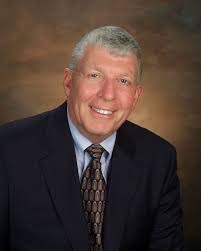
John Ostermiller
Ostermiller was elected mayor in 2003 after serving on the Littleton City Council since 2000. He was appointed to the city council to fill the vacancy created when council member Susan Beckman was elected Arapahoe County Commissioner for District 1 in 2000. Prior to being appointed to city council, Ostermiller served on the Littleton Planning Commission for 20 years.
During his term as mayor, Ostermiller served on the Executive Committee of the Metro Mayors Caucus, on the Arapahoe County Mayors and Managers committee and was active in the South Metro Denver Chamber of Commerce. He also served as council liaison to Western Welcome Week and the City's fire rescue department partners, was a member of the 18th District Judicial Facilities Task Force and served on numerous Littleton Public School Committees.
Significant events and accomplishments during Ostermiller's term as mayor include the expansion of Littleton Historical Museum, expansion of the City Service Center, construction of new fire station 12 on Broadway, construction of the Highline Canal underpass at County Line Road and acquisition of the Central Construction property adjacent to the river which would later become Reynolds Landing. Additionally, South Suburban Park and Recreation District's Buck Recreation Center was opened, and construction started on the Littleton/Englewood Waste Water Treatment Plant for regulatory compliance, capacity addition and infrastructure modernization.
On the national scene Littleton was selected as a City Livability Award Winner by the U.S. Conference of Mayors for its Greater Littleton Youth Initiative. The Littleton Immigrant Integration Initiative became operational with a grant from the Colorado Trust. Also during his term, the Littleton City Council was honored to host the Baghdad, Iraq City Council during their tour of the United States to experience democracy first hand.
He has served as business administrator for the Littleton United Methodist Church since 2008.
James Taylor, Mayor 2005-2007
Born in a house on a farm/ranch outside of Quitaque, Texas, Taylor was the only boy in his high school graduating class of nine students. He attended West Texas State College (now West Texas A&M University) graduating with majors in education and history and a minor in mathematics. At the University of Denver, he received his master’s degree in elementary and secondary educational administration. Taylor spent 35 years in the Sheridan School District as a teacher of math and as a principal at the elementary and middle school levels.
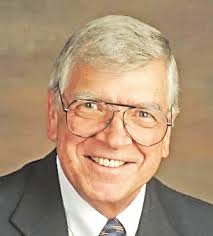
James Taylor
Prior to moving to Littleton, he had served four years on the Northglenn City council. Taylor was on the Littleton City Council from 1977 to 1985 and again from 2001 to 2013. He was elected mayor in November, 2005. He served three different terms on the Colorado Municipal League Executive Board and as President of the League in 1983 to 1984.
While on the city council Taylor supported the beautification and remodel for the King Soopers located at Littleton Boulevard and Broadway.
His extensive involvement in the community includes serving as a member of the Suburban Parks and Recreation District’s Board, a member of the Friends of the Littleton Library and Museum, and fundraising for Interfaith Community Services.
Taylor was awarded the John V. Christensen Memorial Award by the Denver Regional Council of Governments due to his long-term work on the Littleton City Council. He worked for six years on the DRCOG Board of Directors as chair, vice chair, treasurer and secretary.
Taylor was member and chairman of the Riverfront Urban Renewal Authority (now Littleton Invests For Tomorrow). In January 2015, he resigned after 32 years as chairman.
In honor of Taylor’s commitment to the community, South Suburban re-named the Harlow West Park to the James Taylor Park. This park is located at West Belleview and South Meade Street just west of the Harlow Park and Pool. Ginny’s Garden also resides at the park. His wife, Ginny, passed away in the spring of 2000 and Ginny’s Garden is located in the park next to the picnic shelter.
Doug Clark, Mayor 2007-2011
Raised in Arizona, Doug Clark attended Northern Arizona University. He graduated with a bachelor’s in philosophy in 1977. Clark worked in the medical devices, engineering and construction, and aerospace industries before starting his own consulting business.
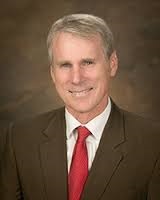
Doug Clark
Clark was originally elected for a four-year term in 1995, a two-year term in 2005 and won an additional four-year term in 2007. During his time as mayor, Littleton renegotiated its service contract with Denver Water, constructed a police annex to the City Center, helped establish the South Platte Humane Society, and added 24 acres of parks and open space.
Clark has been active with the Arapahoe County Republican Party and served for 10 years on the Littleton City Council. He served on the board of directors of the Denver Regional Council of Governments, as the governor of the Urban Flood Control and Drainage District, and a member of the Metro Mayors Caucus.
Debbie Brinkman, Mayor 2011-2013
Debbie Brinkman was first elected to the city council in November 2007 representing District IV. She ran unopposed and was re-elected in 2011 to a four-year term. She was elected by her peers on city council in 2011 to serve a two-year term as Mayor Pro Tem and then in 2011 to serve a two-year term as mayor.
She earned her bachelor’s degree in journalism and mass communications from the University of Northern Colorado. Brinkman enjoyed a 24-year career in advertising and marketing and has owned her own business.
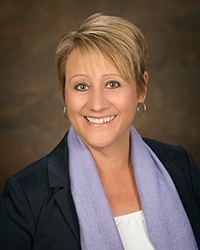
Debbie Brinkman
She was appointed by Governor John Hickenlooper as the Arapahoe County representative to the board of directors of the Urban Drainage and Flood Control District and the Colorado Emergency Preparedness Commission. Brinkman has represented the interests of the Littleton on the South Platte Working Group since 2007. She has also served as a liaison to the Fine Arts Committee and the Museum Board. In 2013, she was elected by her peers to the Colorado Municipal League Board of Directors.
During her time as mayor, Brinkman led the effort to design an economic development mission and vision for council and created the Annual Littleton Economic Development Symposium. As a citizen Brinkman lead residents to a referendum to reverse a council rezone that would place a Walmart store on a piece of land abutting South Platte Park. In 2013, as mayor, she approved a rezone of the same property for Breckenridge Brewery’s new world headquarters and Design By Sundown’s new corporate office.
Brinkman advocated for open space, improved water flows in the South Platte River, and trail safety. She was actively involved in the redesign of the Riverside Down open space improvements and the plan for redesigning the river experience and upland experience at Reynolds Landing. She was involved in refining the city’s future economic development programs and processes.
Phil Cernanec, Mayor 2013-2015
Born in Ohio, Phil Cernanec moved to Littleton in 1990. He was elected to the city council in November 2009 for a four-year term representing District III. He was re-elected to District II in 2013 for another four-year term. His peers on the city council elected him as Mayor in November 2013 for a two-year term. Previously, Cernanec served as an elected member of the South Suburban Parks and Recreation District Board of Directors.
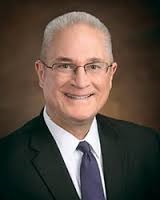
Phil Cernanec
Cernanec graduated from the University of Notre Dame with a bachelor’s degree in mathematics. He had a long career in the financial services industry, serving as a product actuary for several insurance carriers and as a consultant to international firms. Cernanec has also been an adjunct professor and certified leadership facilitator.
Cernanec was involved with the South Metro Denver Chamber of Commerce, the city council audit committee, and the board of directors of the Denver Regional Council of Governments. He was an advocate for responsible fiscal management, strong neighborhoods, and having Littleton open for business expansion and investment. During his time as mayor the Breckenridge Brewery and the renovated King Soopers on Littleton Blvd. were completed and opened to the public.
Bruce Beckman, Mayor 2015-2017
Bruce Beckman was elected to the Littleton City Council in November 2011 for a two-year At-Large seat. He was reelected in 2013 for a four-year term. His peers on the city council elected him as Mayor Pro Tem in November, 2013 for a two-year term.
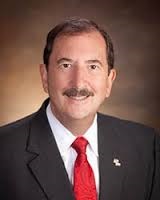
Bruce Beckman
Beckman earned his bachelor’s degree from Washington and Lee University. He obtained a master’s degree in public administration from the University of Northern Colorado. Beckman was commissioned a second lieutenant in the U.S. Army following graduation. Beckman spent three years on active duty as an infantry officer. He joined the Colorado Army National Guard and retired at the rank of colonel.
He enjoyed a long career with the City of Littleton as a police officer. He was promoted several times and retired in 2010 as a division chief.
As a member of city council, Beckman brought his experience living and working in Littleton to conversations concerning the city’s future. He was an alternate to the board of directors of the Denver Regional Council of Governments. His interest areas focused on the city council goals of preserving and cultivating a quality community, assuring a financially sound city government, and pursuing a balanced and sustainable local economy. Beckman stated that one of his major accomplishments as mayor was to cultivate a better understanding of what is important to Littleton neighborhoods.
Debbie Brinkman, Mayor 2017-2019
In her second term as mayor (see biography under Mayor 2011-2013) Debbie Brinkman played a role in several significant Littleton issues, including urban renewal, the approval of the Vita Littleton apartment complex near the light rail station in downtown Littleton, the dissolution of Littleton's fire department and merger with South Metro Fire Rescue, the approval of Littleton's first comprehensive plan since the 1980s, and the first transportation plan.
Jerry Valdes, Mayor 2019-2021
Jerry Valdes was elected to the city council in November 2011, 2015, and 2019 for four-year terms in District II. In 2019, the council elected him mayor for a two-year term.
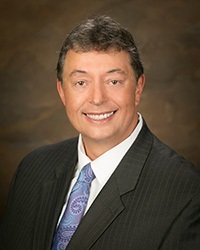
Jerry Valdes
Valdes received his bachelor’s degree in small business management from the University of Northern Colorado.
Valdes career has been in the real estate and property management industries. He is director of property operations for Renaissance Property Management Corporation and is a licensed real estate broker. Valdes is a statistician for the Denver Broncos and also works for the Denver Outlaws.
Valdes was an appointed member of the planning commission for 12 years, serving as both chair and vice chair. He was also a member of the Littleton Housing Authority board of directors.
Valdes interests on city council have included housing, neighborhoods and the planning and development processes. His focus on city council was developing and maintaining the public infrastructure, preserving and cultivating a quality community; and providing a safe community to live, work and play.
In 2020, Littleton voters approved an amendment to the city charter which, starting in 2021, allows voters to directly elect the mayor. (Previously, the mayor was elected by council every two years from among the seated members.)
Kyle Schlachter, Mayor 2021-2025
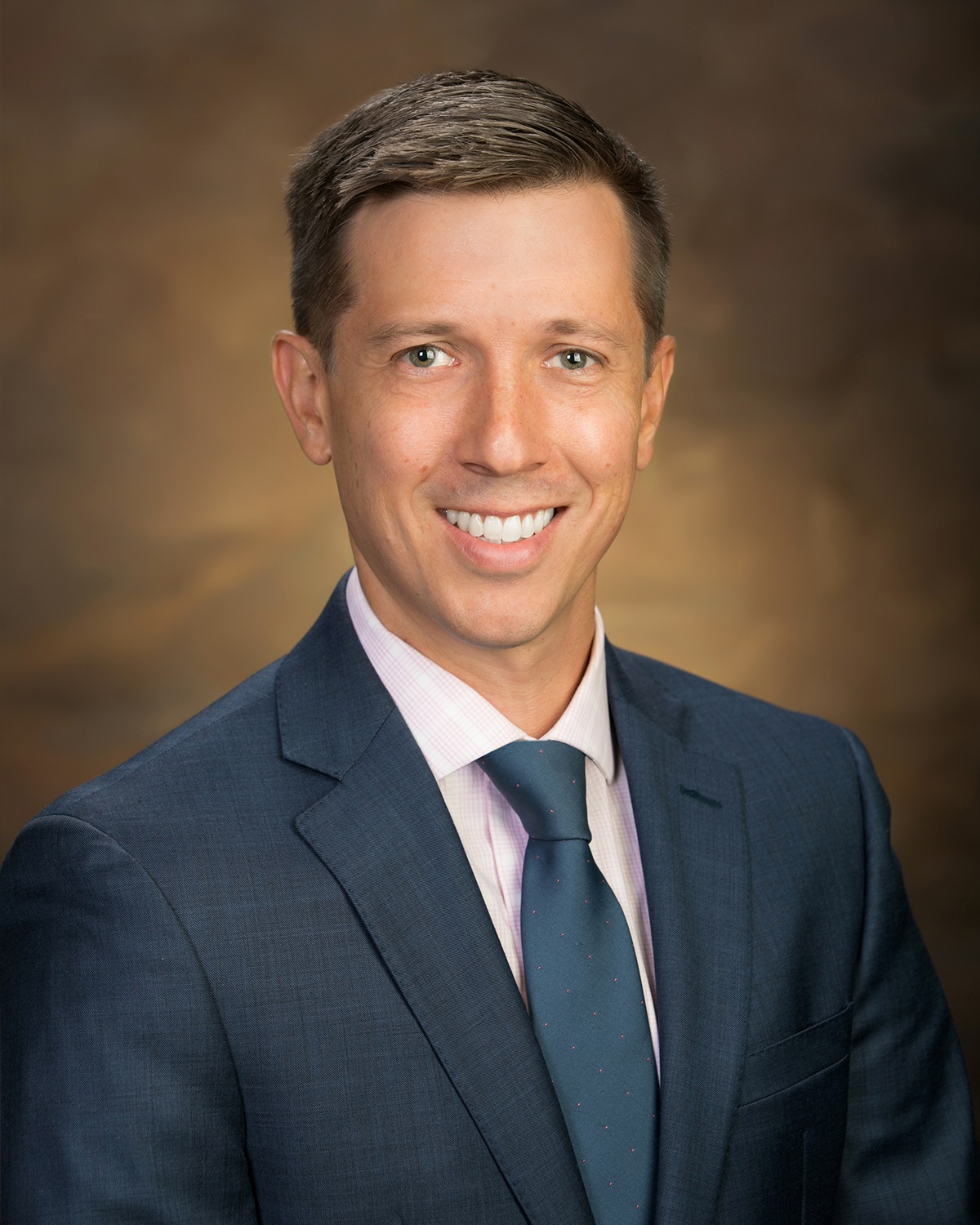
Kyle Schlachter
In November, 2021, Kyle Schlachter was elected by voters to a 4-year term as mayor of Littleton. During his campaign for mayor Schlachter said that he would like to focus on environmental sustainability, making Littleton more accessible regarding how people get around the city, and encouraging more young adults and people of varied backgrounds to get involved in city life and government.
Schlachter was born and raised in Racine, Wisconsin along the shores of Lake Michigan. He graduated from the University of Denver, summa cum laude and Phi Beta Kappa with a Bachelor of Science in Environmental Science and earned a Masters of Science in Geography from the University of Tennessee. In 2005 and 2006, he participated in the Japan Exchange and Teaching (JET) Program. He lived in Kyoto, Japan and worked as an Assistant Teacher of English in two local high schools. Kyle and his wife moved to Littleton in 2009. Since 2010, he has worked as the Outreach Marketing Coordinator for the Colorado Wine Industry Development Board at the Colorado Department of Agriculture.
Schlachter served on the Littleton Invests For Tomorrow Urban Renewal Authority from 2015 until 2018 and was a participant of the inaugural Littleton Leadership Academy in 2017.
In November 2017, Schlachter was elected to a two-year at-large term on the Littleton City Council and served as the Council Liaison to the Next Generation Advisory Committee, Littleton Public Schools Board of Education, Littleton Museum Board, CDOT, WestConnect Coalition, DRCOG Board (alternate), and Arapahoe County Transportation Forum (alternate).
Bibliography
Bemis Public Library. Littleton Scrapbooks, 1968-1992.
The Denver (Colo.) Post. Denver Post Publishers, 1895-
Freemasons of Littleton, Colorado. Weston Lodge Number 22, A. F. & A. M., 1872-1973. Littleton: A. F. & A. M., 1973.
Littleton (Colo.) Independent. Littleton Independent Publishers, 1888-
Littleton Independent. The Story of Littleton, Denver's Best Suburb, Golden Jubilee Number, July 22, 1938. Littleton: Littleton Independent Publishers, 1938.
Littleton Independent. Sixtieth Anniversary Edition, 1888-1948. Littleton: Littleton Independent Publishers, 1948.
Littleton Museum. Biographical Card Files.
McQuarie, Robert J. and C.W. Buchholtz. Littleton, Colorado, Settlement to Centennial. Littleton, Colorado: Littleton Historical Museum and Friends of the Littleton Library and Museum, 1990.
Photographs courtesy of the Littleton Museum unless otherwise noted. To order copies, contact the museum at 303-795-3950.
Compiled by Rebecca Dorward, Phyllis Larison and Amelia Martinez
Updated February 2022 by Phyllis Larison